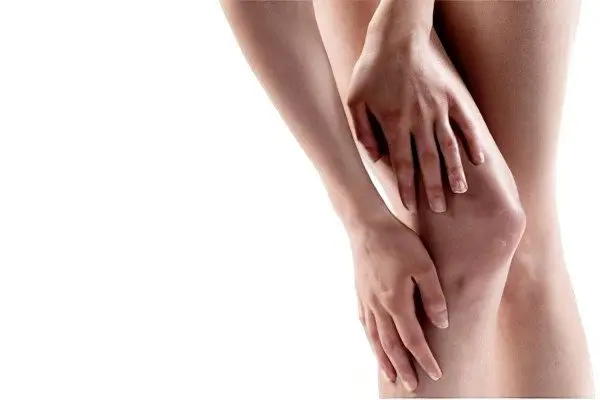Pulling pain in the leg can be caused by both banal causes and serious diseases. Minor discomfort occurs in people after physical muscle strain, after hypothermia of the lower extremities, but after a short time it passes on its own. If the pain is intense, disturbing for a long time, then you need to find out their cause and eliminate it.
Causes of pulling pain in the leg

Pulling pain in the lower extremities may be due to the following reasons:
Osteochondrosis of the spine, causing compression of nerve fibers. In this case, the pain in the leg is pulling, it can be quite intense. With the progression of osteochondrosis, it tends to increase, becomes acute. There is pain both in the upper and lower part of the leg, in the lower back. In parallel, the person’s gait suffers, he begins to be haunted by convulsions and a feeling of numbness. The pain is unilateral, goes along the nerve.
Varicose veins often cause pain in the legs. With this disease, the venous walls are deformed, overfilled with blood, and can become inflamed. Drawing pain haunts a person throughout the day, tends to increase in the evening. The nature of the pain in the second half of the day changes, it becomes bursting. Seizures may occur. Most often, the leg hurts below the knee, in the calf area. After rest, the pain becomes less intense. A characteristic sign of varicose veins are dilated veins on the legs, which appear under the skin.
Deficiency of vitamins and minerals can cause pain in the legs. More often than others, such symptoms are manifested by a lack of B vitamins, vitamin D, magnesium or iron. The pain is concentrated in both limbs, most often in the lower leg. The lack of B vitamins will be indicated by symptoms such as increased fatigue, disturbances in the functioning of the nervous system, skin itching and dryness of the dermis, sleep problems. With a deficiency in the body of vitamin D, in addition to pain in the legs, a person will suffer from cramps, his nails and teeth will deteriorate. If there is not enough magnesium in the body, then joint pains begin to bother, sleep disorders appear, the person becomes nervous and irritable. With iron deficiency, the skin becomes unnaturally pale, and the likelihood of bleeding increases.
Diseases of the joints can be expressed as pulling pains in the legs. These are pathologies such as: rheumatism, gout, arthritis, arthrosis, osteoporosis.
Diseases of the endocrine glands lead to a failure in metabolic processes in the bone tissue, which entails the occurrence of pulling pains. The most common endocrine disorder is diabetes mellitus. The disease leads to vascular damage, which causes pain in the legs both during walking and at rest. Additional symptoms of diabetes are itching, thirst, frequent urination, hair loss on the legs.
Diseases of the kidneys. With kidney damage in humans, edema is formed. The lower extremities are the first to suffer. Compression of the soft tissues of the legs leads to pain. The pain is dull, aching, most often localized in the lower part of the legs. Other symptoms indicating a pathology of the kidneys include a change in the nature of urination (an increase in the volume of urine or its retention), an increase in blood pressure, painful urination, an increase in general weakness, and lumbar pain.
Restless legs syndrome can cause pain in the lower extremities. They arise and intensify during a night’s rest. A person complains that his legs seem to “twist”. After he sets them in motion, the discomfort recedes.
Flat feet are another cause of foot pain. Discomfort will be present on an ongoing basis, and intensify after physical exertion. The person indicates that there is a feeling of “lead heaviness” in the legs. As the pathology progresses, the pain will increase.
Pain in the legs often haunts obese people. An enormous load is placed on the lower limbs. Veins, joints, bones and soft tissues suffer. In addition, overweight people have a higher risk of developing diseases such as diabetes, varicose veins, arthritis, arthrosis, etc.
Pulling pain in the legs may be the result of a previous injury to soft tissues or bone structures. Naturally, immediately after a fracture or muscle strain, the pain will be acute. However, as it recovers, it becomes pulling. Even when a full recovery comes, a person can still complain of pulling pains in the injured limb. Increased discomfort when the weather changes.
[Video] Neurosurgeon, vertebrologist Gorodnov A. V. – 3 main causes of pain in the legs. Why do my legs and feet hurt?
Tips to help patients relieve leg pain before they see a doctor:
Take a horizontal position, raising your legs to a hill.
Perform a foot massage.
Take a pain reliever such as ibuprofen or paracetamol.
These methods will relieve the pain, but not eliminate its cause.
In order to prevent the development of dangerous diseases that can lead to pain, you need to lead a healthy lifestyle, eat right, play sports, strengthen the spine and abdominal muscles.
When do you need to see a doctor in an emergency?
Sometimes pulling pain in the legs requires immediate medical attention.
Such situations include:
Confusion of consciousness, inability to orient in space.
Received leg injury.
Prolonged pain that cannot be relieved with analgesics.
If the patient has symptoms of diabetes mellitus, or signs of kidney damage, then you should also not delay going to the doctor.









